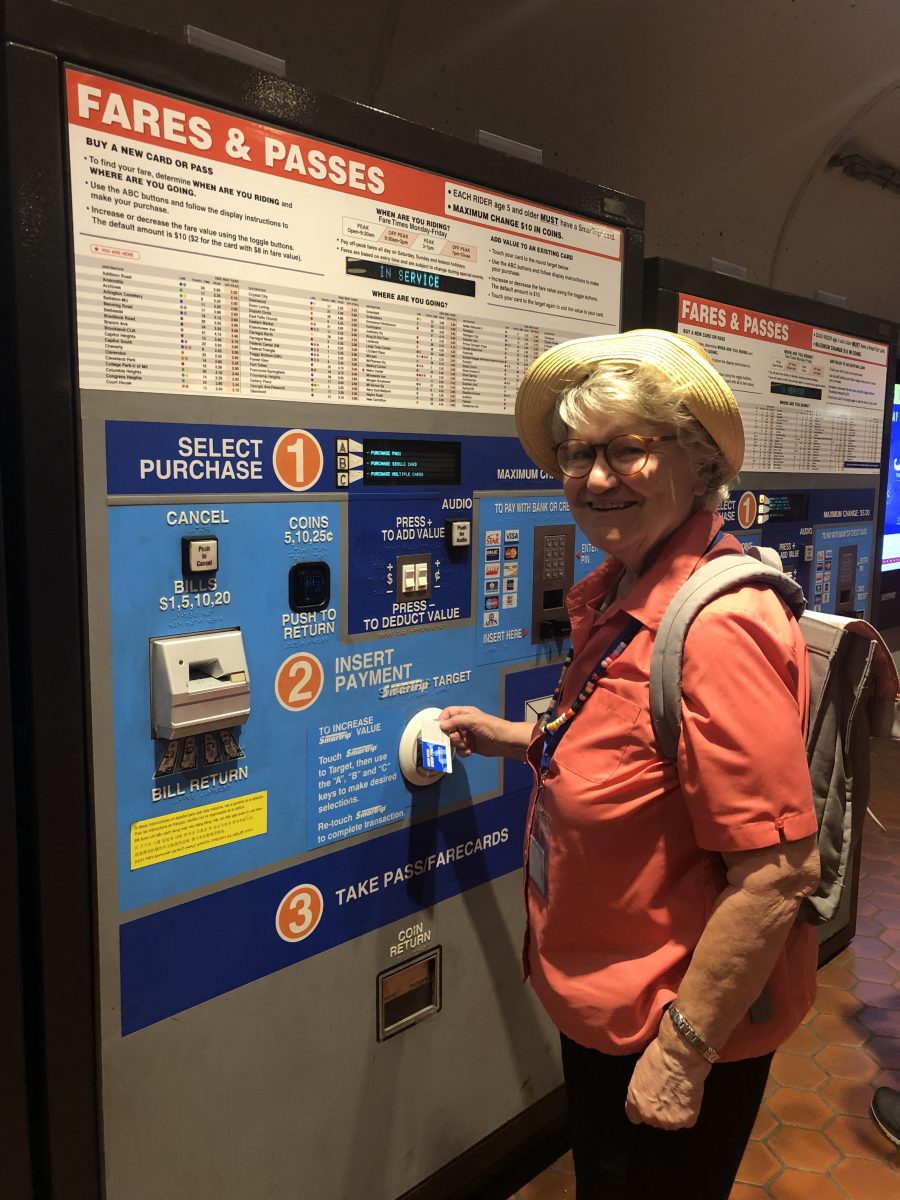Council on Aging Mobility Manager offers Wednesday Walks for Seniors
- Date: 05/06/2021
Mobility Management of Rock County Council on Aging will conduct “Wednesday Walks” through Oct. 20, which will allow seniors to…
Jane Hardin is a Project Specialist at the Community Transportation Association of America (CTAA). As a lifelong public transit user - she doesn’t have a driver’s license and has never owned a car – and is a passionate advocate for older persons mobility. I sat down with her to talk about her experiences and insights on public transit, mobility, and how they impact the way we interact with our communities. Below is an edited version of our conversation.

When looking back, how would you describe your experience building your life around public transit? What has a transit centric lifestyle meant to you?
I grew up in Kansas City, Missouri and at the time, like most cities in America, it still had an excellent coordinated public transit system. One of my first memories is riding on a street car with wicker seats. Although sadly, it was eventually demolished as the highways came in and cars became more dominant. Later I went to Wellesley in Massachusetts for school. Students were not allowed to have cars, so walking was encouraged, plus the proximity of Boston meant there was transit we could use to get into the city.
While I never had a driver’s license, there were definitely times I wished I had one based on the idea that “I could get where I wanted to go when I wanted to go”. When I thought this, it didn’t include cost considerations, it was all about the “freedom”. However, in the end, public transit always got me where I needed to go. I could have never had the lifestyle I wanted without public transportation. For me, I like being able to get around the city to see different neighborhoods, go to the theater, meet friends, etc. all without spending too much money. Public transit made that possible.
What have been the benefits of being a lifelong public transit user?
The first aspect that comes to mind is money. While working on aging issues at AARP – I learned how to do a travel budget, so I made one for myself. The cost to buy, even a used car, plus maintenance and parking, wasn’t worth it to me. Even when I had to use taxis to get to work for a period of time – it still wasn’t as expensive. Overall, not having a car allowed me to save more for things I cared about, such as my retirement. if you look at the amount of money I was able to invest in my retirement, a significant portion of that would have been the expense of owning a car.

As your mobility needs have changed, how has that impacted your transportation choices or changed your travel patterns?
Luckily, there haven’t been too many changes long-term in my mobility needs. However, there was a time where I couldn’t walk for more than 40-50 steps at a time, and during that period I ended up having to take taxi cabs – which still was not as expensive as using a car.
However, I will say that like many older people I have stiff knees, and I am very grateful to have buses with low floors, and escalators and elevators at the DC Metro stations. While I need low steps, elevators, and escalators, they are a wonderful example of universal design – everyone likes them and can benefit from them. From tourists lugging suitcases to parents with strollers, often the changes or features available in public transportation made for older persons or people with disabilities are good for everyone.
What other aspects of a city or community are also key to mobility in addition to public transportation?
Sidewalks are an incredibly important part of transportation. I came from a family of walkers, and I have always lived in neighborhoods with sidewalks. You get to know a city by walking. I have always enjoyed the study of a city, and learning about the architecture and the people - I love the people. Also, research is showing that for people who live alone (like me), in addition to your close friends, you should also have secondary and tertiary relationships. I have found these types of relationships in the neighbors I see when out walking. We may never exchange names, but we will wave at each other. When I get lonesome, instead of getting on my phone, often I will go walking as it provides me connection with other human beings.
What is your favorite thing about public transportation?
That I get there. Despite talking about all these other things, it comes down to the fact that I am able to get to work, which allows me to gain an income and live my life as I do.
Have more mobility news that we should be reading and sharing? Let us know! Reach out to us (info@ccam-tac.org).
Please confirm you want to block this member.
You will no longer be able to:
Please note: This action will also remove this member from your connections and send a report to the site admin. Please allow a few minutes for this process to complete.